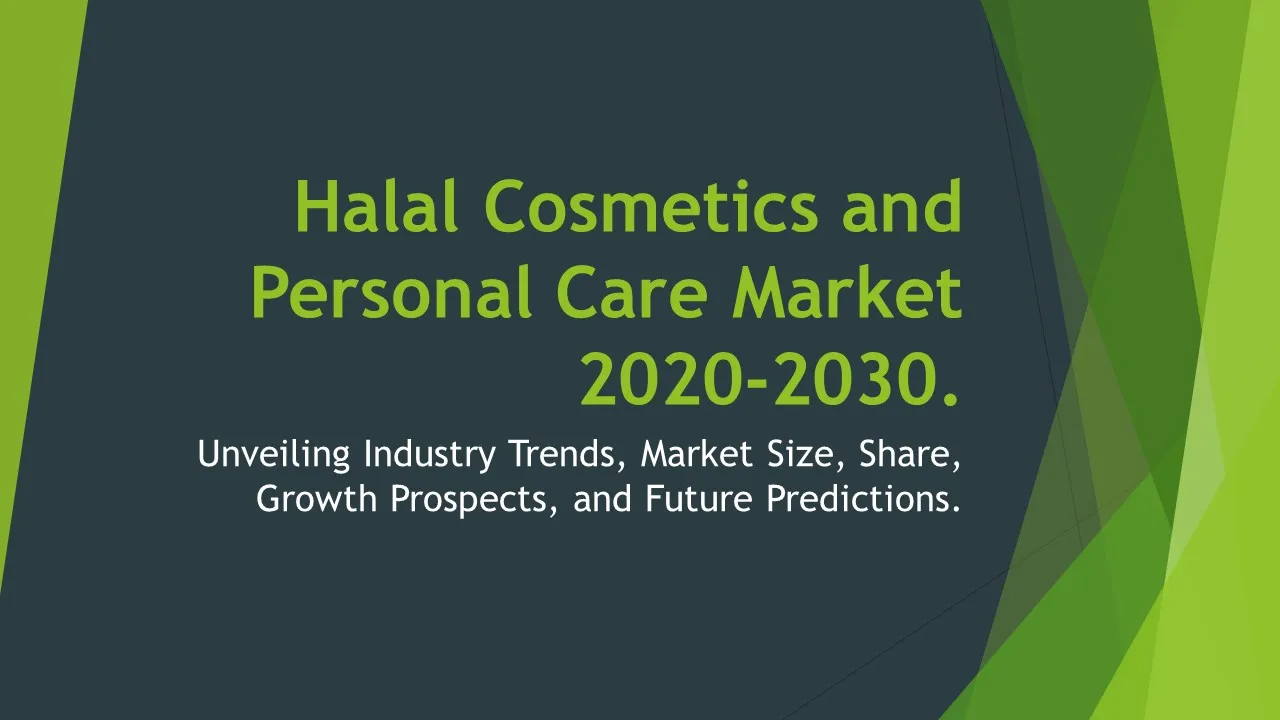Cold Light Teeth Whitening Kits
Teeth Whitening Kits Market Segments - by Product Type (LED Light Kits, UV Light Kits, Whitening Strips, Whitening Pens, Whitening Gels), Application (Home Use, Dental Clinics), Distribution Channel (Online Stores, Drugstores/Pharmacies, Dental Clinics, Specialty Stores, Supermarkets/Hypermarkets), Ingredient Type (Hydrogen Peroxide, Carbamide Peroxide, Sodium Bicarbonate, Activated Charcoal, Coconut Oil), and Region (North America, Europe, Asia Pacific, Latin America, Middle East & Africa) - Global Industry Analysis, Growth, Share, Size, Trends, and Forecast 2025-2035
- Report Preview
- Table Of Content
- Segments
- Methodology
Cold Light Teeth Whitening Kits Market Outlook
The global teeth whitening kits market is projected to reach a size of approximately $5.5 billion by 2035, growing at a compound annual growth rate (CAGR) of 7.2% during the forecast period from 2025 to 2035. This robust growth can be attributed to increasing consumer awareness regarding dental aesthetics along with the rising influence of social media, where bright and white smiles are often showcased. Furthermore, the convenience of at-home whitening solutions, coupled with the advancements in product formulations that enhance effectiveness while reducing sensitivity, are expected to propel the demand for these kits. The growing prevalence of dental issues, alongside a burgeoning trend toward preventive dental care, serves as a significant growth factor in this expanding market.
Growth Factor of the Market
One of the primary growth factors for the teeth whitening kits market is the rising trend of cosmetic dentistry, which emphasizes the importance of aesthetics in dental care. As consumers become increasingly aware of the impact of a bright smile on their confidence and social interactions, they are more likely to invest in teeth whitening solutions. Additionally, the advent of innovative and user-friendly kits has made it easier for individuals to achieve professional-level results at home, thus driving consumer preferences away from traditional in-clinic treatments. The growing emphasis on maintaining oral hygiene, particularly among millennials and Gen Z, further fuels the demand for teeth whitening products. Moreover, e-commerce platforms have made these products more accessible, enabling consumers to conveniently purchase kits online, which contributes to market growth. Finally, the rising number of dental clinics offering teeth whitening services also plays a vital role in this market, as they promote complementary at-home kits to their patients.
Key Highlights of the Market
- Increasing consumer preference for at-home dental solutions.
- Technological advancements leading to more effective whitening formulations.
- Rising awareness regarding oral hygiene and aesthetics among consumers.
- Growing availability of teeth whitening products through various distribution channels.
- Expanding market presence in emerging economies due to changing lifestyles.
By Product Type
LED Light Kits:
LED light kits have gained traction in the teeth whitening kits market due to their effective whitening capabilities that often yield noticeable results in a short duration. These kits typically combine LED technology with whitening gels that contain active bleaching agents, which work in tandem to accelerate the whitening process. The appeal of simplicity and speed offered by LED light kits has made them a favorite among consumers seeking quick results without the need for professional interventions. The ease of use and the convenience of performing this procedure at home further enhance their popularity.
UV Light Kits:
Unlike LED kits, UV light kits employ ultraviolet light to enhance the effectiveness of the whitening agents in the products. These kits have been traditionally seen in professional dental settings, but advancements have made them available for home use as well. Consumers who opt for UV light kits appreciate the professional-grade whitening experience they offer. However, there are some safety concerns about prolonged UV exposure, making them less favored compared to LED alternatives. Nevertheless, the efficacy of these kits in achieving significant whitening results cannot be overlooked, attracting a segment of consumers looking for robust solutions.
Whitening Strips:
Whitening strips are among the most popular product types in the teeth whitening kits market due to their ease of use and affordability. These thin, flexible strips coated with a whitening gel can be applied directly onto the teeth, allowing for a hassle-free experience. The gradual whitening effect achieved through consistent use appeals to consumers who prefer a less intensive whitening process. Their widespread availability in retail stores as well as online has contributed to their accessibility, making them a go-to option for many looking to brighten their smile.
Whitening Pens:
Whitening pens have emerged as a convenient option for quick touch-ups and on-the-go solutions. These pens allow users to apply a whitening gel directly onto their teeth, making them perfect for individuals with busy lifestyles. The compact design and ease of application make whitening pens a popular choice among younger consumers and those who may be hesitant about more involved whitening procedures. While they may not provide the same level of whitening as other kits, their convenience factor plays a significant role in their market appeal.
Whitening Gels:
Whitening gels are versatile products that can be used with various delivery methods, including trays or strips. They contain potent active ingredients that effectively break down stains and discoloration on the teeth. The customization option available with whitening gels, where users can control the application amount and frequency, makes them a preferred choice for many. The gel formulation allows for easy application and potentially faster results when used correctly, enhancing their attractiveness within the market.
By Application
Home Use:
Home use applications dominate the teeth whitening kits market segment, as consumers increasingly opt for convenient at-home solutions to enhance their smiles. The rise in e-commerce and targeted marketing strategies has made these products readily available to consumers. Kits designed for home use often come with user-friendly instructions and can deliver results comparable to professional treatments without the associated costs. This segment is expected to witness significant growth as more people prioritize cosmetic dental care as part of their regular hygiene routines.
Dental Clinics:
While the home-use segment is prevalent, dental clinics also play a crucial role in the teeth whitening kits market. Clinics often sell professional-grade whitening kits to their patients, allowing individuals to maintain their whitening results at home. Moreover, dental professionals recommend specific products based on their patients' individual needs, further solidifying the importance of this segment. The integration of in-clinic treatments with home care solutions helps enhance overall customer satisfaction and encourages repeat purchases of these kits.
By Distribution Channel
Online Stores:
Online stores have quickly become one of the most significant distribution channels for teeth whitening kits due to the convenience they offer consumers. The ability to shop from the comfort of one's home, coupled with the extensive range of products available online, has led to a surge in online sales. E-commerce platforms often provide detailed product descriptions and consumer reviews, which help buyers make informed decisions. Additionally, promotional offers and discounts further motivate consumers to purchase whitening kits through online stores, contributing to the growth of this distribution channel.
Drugstores/Pharmacies:
Drugstores and pharmacies remain traditional yet vital distribution channels for teeth whitening kits. These retail outlets typically stock a variety of whitening products, allowing consumers to browse and select according to their preferences. The advantage of purchasing from drugstores is the immediate access to products without waiting for shipping, which appeals to those looking to quickly address their whitening needs. Pharmacists often provide recommendations as well, enhancing the consumer's purchasing confidence and leading to increased sales within this channel.
Dental Clinics:
Dental clinics serve a unique distribution channel for teeth whitening kits, particularly professional-grade options. Many clinics offer their patients the opportunity to purchase kits that complement in-office whitening treatments. This approach not only provides convenience for patients but also enhances the overall effectiveness of the whitening process. Dental professionals often highlight the importance of using specific products, thus driving sales through this channel and fostering brand loyalty among consumers who trust their dentist’s recommendations.
Specialty Stores:
Specialty stores focusing on beauty and personal care products also contribute to the teeth whitening kits market by catering to a niche audience. These stores often curate a selection of high-quality and innovative whitening products, appealing to consumers who seek premium options. The knowledgeable staff in specialty stores can provide personalized recommendations, enhancing the shopping experience for consumers. This segment is particularly popular among consumers who are willing to invest in high-end products for optimal results, thus sustaining the growth of specialty retail in this market.
Supermarkets/Hypermarkets:
Supermarkets and hypermarkets are essential distribution channels in the teeth whitening kits market, as they offer consumers access to a broad range of products all in one place. The convenience of shopping for whitening kits alongside other grocery items is a significant appeal for many households. These retailers often carry multiple brands and formulations, enabling consumers to compare options easily. Additionally, promotional events and sales in supermarkets can attract more buyers, contributing to the visibility and accessibility of teeth whitening kits in the market.
By Ingredient Type
Hydrogen Peroxide:
Hydrogen peroxide is one of the most commonly used ingredients in teeth whitening kits due to its powerful bleaching properties. This active ingredient works by penetrating the enamel and breaking down stains on the teeth, resulting in a whiter appearance. Products that contain hydrogen peroxide often provide quick results, which attributes to their popularity among consumers looking for immediate whitening solutions. However, it is essential for consumers to follow usage instructions carefully to minimize potential sensitivity issues, ensuring a safe and effective whitening experience.
Carbamide Peroxide:
Carbamide peroxide is another popular ingredient in teeth whitening formulations, often considered a gentler alternative to hydrogen peroxide. It breaks down into hydrogen peroxide when applied, thus providing similar whitening effects but with a slower release, which can reduce the potential for tooth sensitivity. This makes carbamide peroxide a preferred choice for consumers seeking an effective yet milder whitening solution. Many at-home kits utilize this ingredient to cater to a broader audience, including those with sensitive teeth.
Sodium Bicarbonate:
Sodium bicarbonate, commonly known as baking soda, is a naturally occurring compound that acts as a gentle abrasive, helping to remove surface stains from the teeth. Its inclusion in whitening kits appeals to consumers looking for natural and less chemically harsh options. Sodium bicarbonate is often marketed for its dual action of whitening while also freshening breath, making it an attractive choice for holistic health-conscious customers. Its effectiveness in mild stain removal and its safety for everyday use contribute to its growing popularity in the teeth whitening market.
Activated Charcoal:
Activated charcoal has gained popularity in recent years due to its supposed detoxifying properties and ability to absorb impurities, thus leading to a whiter smile. Many consumers are drawn to charcoal-based teeth whitening products due to the natural trend in beauty and personal care. However, while some anecdotal evidence suggests that activated charcoal may help in stain removal, scientific support for its efficacy is still limited. Nevertheless, the allure of natural ingredients continues to drive interest in activated charcoal whitening kits among those looking for alternative solutions.
Coconut Oil:
Coconut oil is often highlighted in the market for its purported health benefits, including its mild whitening effects. Used traditionally in oil pulling, coconut oil is believed to improve oral health and assist in stain removal when used regularly. Its rising popularity in teeth whitening kits caters to consumers who prefer natural and organic ingredients. However, while coconut oil may help in maintaining oral hygiene and potentially reducing plaque, it may not provide substantial whitening results compared to other active ingredients, leading to mixed perceptions among users.
By Region
North America stands as the largest market for teeth whitening kits, accounting for approximately 40% of the global market share. The increasing focus on dental aesthetics, coupled with high disposable incomes and consumer awareness regarding oral hygiene, drives this significant market presence. Furthermore, the trend of self-care and personal grooming, especially among millennials, continues to bolster demand for effective whitening solutions. The CAGR for this region is projected to be around 6.5%, highlighting the sustained interest in teeth whitening products. The extensive availability of various brands through diverse distribution channels further solidifies North America's position as a leader in this market.
Europe follows closely, with a market share of about 30%, driven by a growing consumer inclination toward aesthetic dental treatments. The partnership between dental clinics and manufacturers promoting at-home whitening solutions has been instrumental in expanding market opportunities in this region. Emerging markets within Europe are witnessing increased purchasing power, allowing a more extensive consumer base to access teeth whitening kits. The region's projected CAGR is approximately 7.0%, indicating a healthy growth trajectory bolstered by innovative product launches and marketing strategies aimed at educating consumers about the benefits of teeth whitening.
Opportunities
The teeth whitening kits market is poised for various opportunities, especially given the increased focus on health and wellness. As consumers become more conscious of their appearance and oral hygiene, there is a growing demand for safe and effective whitening solutions. This trend presents a unique opportunity for manufacturers to develop innovative kits that cater to specific consumer needs, such as sensitivity issues or natural ingredient preferences. Additionally, companies that prioritize sustainable practices and environmentally friendly packaging can leverage this growing consciousness to differentiate themselves in the competitive landscape. As the trend of e-commerce continues to flourish, brands that invest in comprehensive online marketing and distribution strategies are likely to expand their reach and customer base significantly.
Furthermore, emerging markets in Asia Pacific and Latin America represent substantial growth potential for the teeth whitening kits market. As urban populations grow and middle-class consumers increase their disposable incomes, there will be a higher demand for cosmetic dental products, including whitening kits. Manufacturers can capitalize on this opportunity by tailoring their products to meet local preferences and cultural attitudes toward beauty and oral hygiene. Strategic partnerships with local distributors and online retailers can help brands penetrate these markets effectively. Additionally, educational campaigns that inform consumers about the benefits and proper use of teeth whitening products can foster trust and drive adoption in these regions.
Threats
Despite the promising growth prospects, the teeth whitening kits market faces several threats that could hinder its progression. The increasing prevalence of counterfeit products and substandard alternatives poses a significant risk to consumer safety and brand reputation. As the market expands, the likelihood of consumers encountering low-quality products increases, potentially leading to dissatisfaction and adverse reactions. This issue underscores the importance of stringent regulations and quality control measures in the industry to protect consumers and maintain the integrity of reputable brands. Furthermore, the potential for negative publicity surrounding teeth whitening methods, particularly concerning safety and efficacy, could deter consumers from using such products altogether.
Additionally, the rising competition in the teeth whitening kits market presents a challenge for established brands. New entrants with innovative marketing strategies and appealing product offerings may disrupt the market landscape, leading to price wars and reduced profit margins for existing players. Brands must continuously evolve and differentiate their products to maintain market share, which can be resource-intensive. Furthermore, changing consumer preferences and trends in beauty and personal care can also pose a threat, as companies must remain agile and responsive to shifting market dynamics to stay relevant.
Competitor Outlook
- Whitening Lightning
- GLO Science
- Colgate-Palmolive Company
- Crest
- SmileDirectClub
- Snow Teeth Whitening
- iSmile
- AuraGlow
- Brilliant Distinctions
- Hismile
- Active Wow
- MySmile
- RidgeCrest Herbals
- Dr. Brite
- White With Style
The competitive landscape of the teeth whitening kits market is characterized by a mix of established brands and emerging players, each striving to capture a share of this lucrative market. Key players such as Colgate-Palmolive and Crest have long been recognized for their commitment to quality and innovation in oral care, continually enhancing their product lines with new formulations and technologies. These reputable brands benefit from strong customer loyalty and extensive distribution networks that allow them to reach a broad audience. Emerging companies like Snow Teeth Whitening and Hismile are disrupting the market with unique marketing strategies and a focus on social media, appealing particularly to younger consumers seeking effective and trendy solutions.
Another aspect of the competitive landscape is the emphasis on product differentiation. Many brands are investing in research and development to create proprietary whitening technologies that set them apart from competitors. For instance, GLO Science combines LED technology with unique gel formulations to maximize results while minimizing sensitivity. Meanwhile, brands such as Whitening Lightning and AuraGlow emphasize the use of natural ingredients, attracting health-conscious consumers. This focus on innovation and product differentiation is critical in maintaining competitiveness in a crowded marketplace.
Furthermore, the strategic partnerships between brands and dental professionals have become increasingly common, enhancing credibility and consumer trust. For instance, SmileDirectClub collaborates with licensed dentists to market their products, reinforcing the message of safety and effectiveness. These partnerships not only enhance the brands' reputations but also create opportunities for co-promotions and mutual growth. As consumer preferences continue to evolve, brands that prioritize transparency, customer education, and quality assurance are likely to thrive in the competitive teeth whitening kits market.
1 Appendix
- 1.1 List of Tables
- 1.2 List of Figures
2 Introduction
- 2.1 Market Definition
- 2.2 Scope of the Report
- 2.3 Study Assumptions
- 2.4 Base Currency & Forecast Periods
3 Market Dynamics
- 3.1 Market Growth Factors
- 3.2 Economic & Global Events
- 3.3 Innovation Trends
- 3.4 Supply Chain Analysis
4 Consumer Behavior
- 4.1 Market Trends
- 4.2 Pricing Analysis
- 4.3 Buyer Insights
5 Key Player Profiles
- 5.1 Crest
- 5.1.1 Business Overview
- 5.1.2 Products & Services
- 5.1.3 Financials
- 5.1.4 Recent Developments
- 5.1.5 SWOT Analysis
- 5.2 iSmile
- 5.2.1 Business Overview
- 5.2.2 Products & Services
- 5.2.3 Financials
- 5.2.4 Recent Developments
- 5.2.5 SWOT Analysis
- 5.3 Hismile
- 5.3.1 Business Overview
- 5.3.2 Products & Services
- 5.3.3 Financials
- 5.3.4 Recent Developments
- 5.3.5 SWOT Analysis
- 5.4 MySmile
- 5.4.1 Business Overview
- 5.4.2 Products & Services
- 5.4.3 Financials
- 5.4.4 Recent Developments
- 5.4.5 SWOT Analysis
- 5.5 AuraGlow
- 5.5.1 Business Overview
- 5.5.2 Products & Services
- 5.5.3 Financials
- 5.5.4 Recent Developments
- 5.5.5 SWOT Analysis
- 5.6 Dr. Brite
- 5.6.1 Business Overview
- 5.6.2 Products & Services
- 5.6.3 Financials
- 5.6.4 Recent Developments
- 5.6.5 SWOT Analysis
- 5.7 Active Wow
- 5.7.1 Business Overview
- 5.7.2 Products & Services
- 5.7.3 Financials
- 5.7.4 Recent Developments
- 5.7.5 SWOT Analysis
- 5.8 GLO Science
- 5.8.1 Business Overview
- 5.8.2 Products & Services
- 5.8.3 Financials
- 5.8.4 Recent Developments
- 5.8.5 SWOT Analysis
- 5.9 SmileDirectClub
- 5.9.1 Business Overview
- 5.9.2 Products & Services
- 5.9.3 Financials
- 5.9.4 Recent Developments
- 5.9.5 SWOT Analysis
- 5.10 White With Style
- 5.10.1 Business Overview
- 5.10.2 Products & Services
- 5.10.3 Financials
- 5.10.4 Recent Developments
- 5.10.5 SWOT Analysis
- 5.11 RidgeCrest Herbals
- 5.11.1 Business Overview
- 5.11.2 Products & Services
- 5.11.3 Financials
- 5.11.4 Recent Developments
- 5.11.5 SWOT Analysis
- 5.12 Whitening Lightning
- 5.12.1 Business Overview
- 5.12.2 Products & Services
- 5.12.3 Financials
- 5.12.4 Recent Developments
- 5.12.5 SWOT Analysis
- 5.13 Snow Teeth Whitening
- 5.13.1 Business Overview
- 5.13.2 Products & Services
- 5.13.3 Financials
- 5.13.4 Recent Developments
- 5.13.5 SWOT Analysis
- 5.14 Brilliant Distinctions
- 5.14.1 Business Overview
- 5.14.2 Products & Services
- 5.14.3 Financials
- 5.14.4 Recent Developments
- 5.14.5 SWOT Analysis
- 5.15 Colgate-Palmolive Company
- 5.15.1 Business Overview
- 5.15.2 Products & Services
- 5.15.3 Financials
- 5.15.4 Recent Developments
- 5.15.5 SWOT Analysis
- 5.1 Crest
6 Market Segmentation
- 6.1 Cold Light Teeth Whitening Kits Market, By Application
- 6.1.1 Home Use
- 6.1.2 Dental Clinics
- 6.2 Cold Light Teeth Whitening Kits Market, By Ingredient Type
- 6.2.1 Hydrogen Peroxide
- 6.2.2 Carbamide Peroxide
- 6.2.3 Sodium Bicarbonate
- 6.2.4 Activated Charcoal
- 6.2.5 Coconut Oil
- 6.3 Cold Light Teeth Whitening Kits Market, By Distribution Channel
- 6.3.1 Online Stores
- 6.3.2 Drugstores/Pharmacies
- 6.3.3 Dental Clinics
- 6.3.4 Specialty Stores
- 6.3.5 Supermarkets/Hypermarkets
- 6.1 Cold Light Teeth Whitening Kits Market, By Application
7 Competitive Analysis
- 7.1 Key Player Comparison
- 7.2 Market Share Analysis
- 7.3 Investment Trends
- 7.4 SWOT Analysis
8 Research Methodology
- 8.1 Analysis Design
- 8.2 Research Phases
- 8.3 Study Timeline
9 Future Market Outlook
- 9.1 Growth Forecast
- 9.2 Market Evolution
10 Geographical Overview
- 10.1 Europe - Market Analysis
- 10.1.1 By Country
- 10.1.1.1 UK
- 10.1.1.2 France
- 10.1.1.3 Germany
- 10.1.1.4 Spain
- 10.1.1.5 Italy
- 10.1.1 By Country
- 10.2 Asia Pacific - Market Analysis
- 10.2.1 By Country
- 10.2.1.1 India
- 10.2.1.2 China
- 10.2.1.3 Japan
- 10.2.1.4 South Korea
- 10.2.1 By Country
- 10.3 Latin America - Market Analysis
- 10.3.1 By Country
- 10.3.1.1 Brazil
- 10.3.1.2 Argentina
- 10.3.1.3 Mexico
- 10.3.1 By Country
- 10.4 North America - Market Analysis
- 10.4.1 By Country
- 10.4.1.1 USA
- 10.4.1.2 Canada
- 10.4.1 By Country
- 10.5 Middle East & Africa - Market Analysis
- 10.5.1 By Country
- 10.5.1.1 Middle East
- 10.5.1.2 Africa
- 10.5.1 By Country
- 10.6 Cold Light Teeth Whitening Kits Market by Region
- 10.1 Europe - Market Analysis
11 Global Economic Factors
- 11.1 Inflation Impact
- 11.2 Trade Policies
12 Technology & Innovation
- 12.1 Emerging Technologies
- 12.2 AI & Digital Trends
- 12.3 Patent Research
13 Investment & Market Growth
- 13.1 Funding Trends
- 13.2 Future Market Projections
14 Market Overview & Key Insights
- 14.1 Executive Summary
- 14.2 Key Trends
- 14.3 Market Challenges
- 14.4 Regulatory Landscape
Segments Analyzed in the Report
The global Cold Light Teeth Whitening Kits market is categorized based on
By Application
- Home Use
- Dental Clinics
By Distribution Channel
- Online Stores
- Drugstores/Pharmacies
- Dental Clinics
- Specialty Stores
- Supermarkets/Hypermarkets
By Ingredient Type
- Hydrogen Peroxide
- Carbamide Peroxide
- Sodium Bicarbonate
- Activated Charcoal
- Coconut Oil
By Region
- North America
- Europe
- Asia Pacific
- Latin America
- Middle East & Africa
Key Players
- Whitening Lightning
- GLO Science
- Colgate-Palmolive Company
- Crest
- SmileDirectClub
- Snow Teeth Whitening
- iSmile
- AuraGlow
- Brilliant Distinctions
- Hismile
- Active Wow
- MySmile
- RidgeCrest Herbals
- Dr. Brite
- White With Style
- Publish Date : Jan 21 ,2025
- Report ID : CO-26020
- No. Of Pages : 100
- Format : |
- Ratings : 4.5 (110 Reviews)









